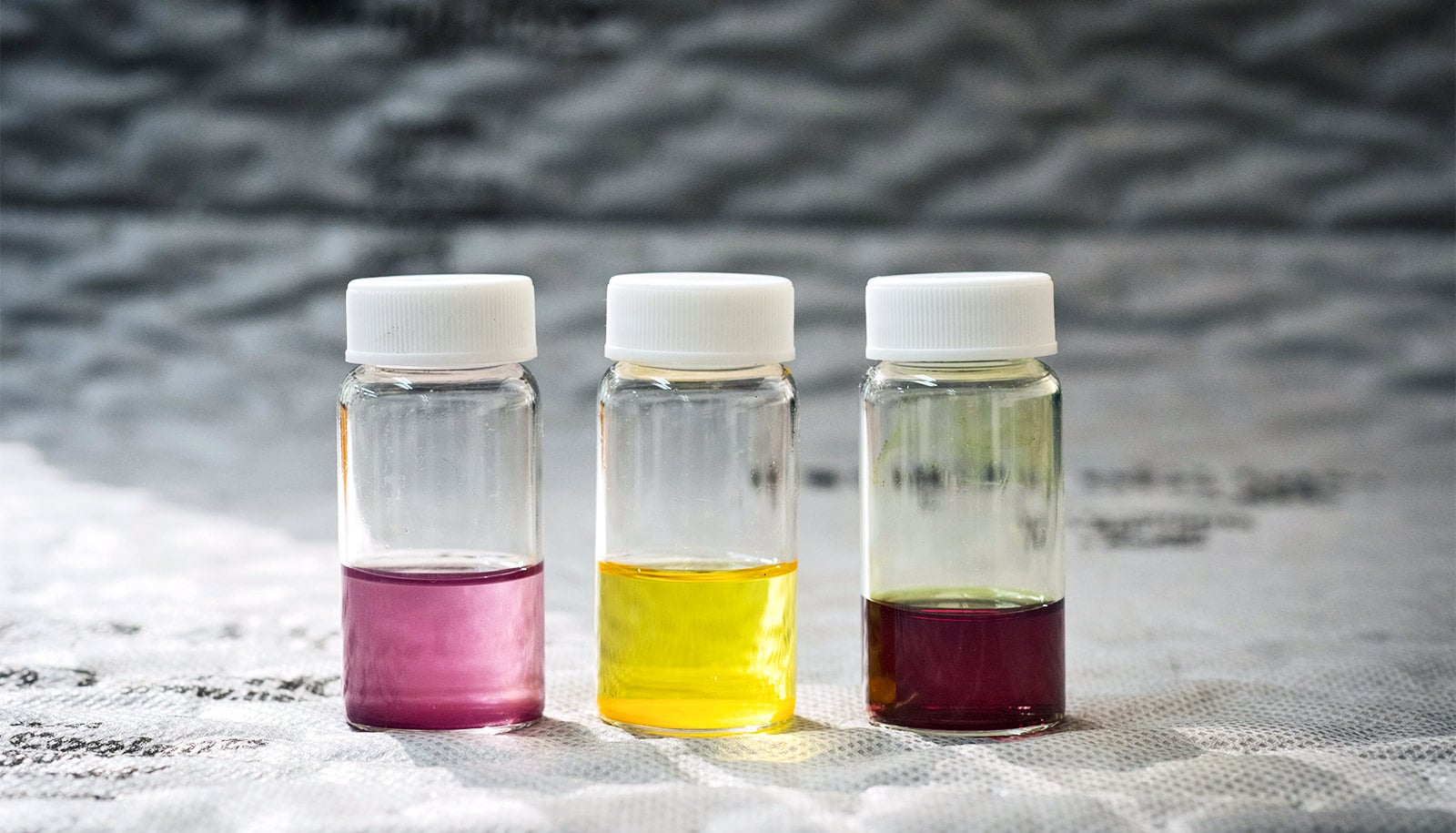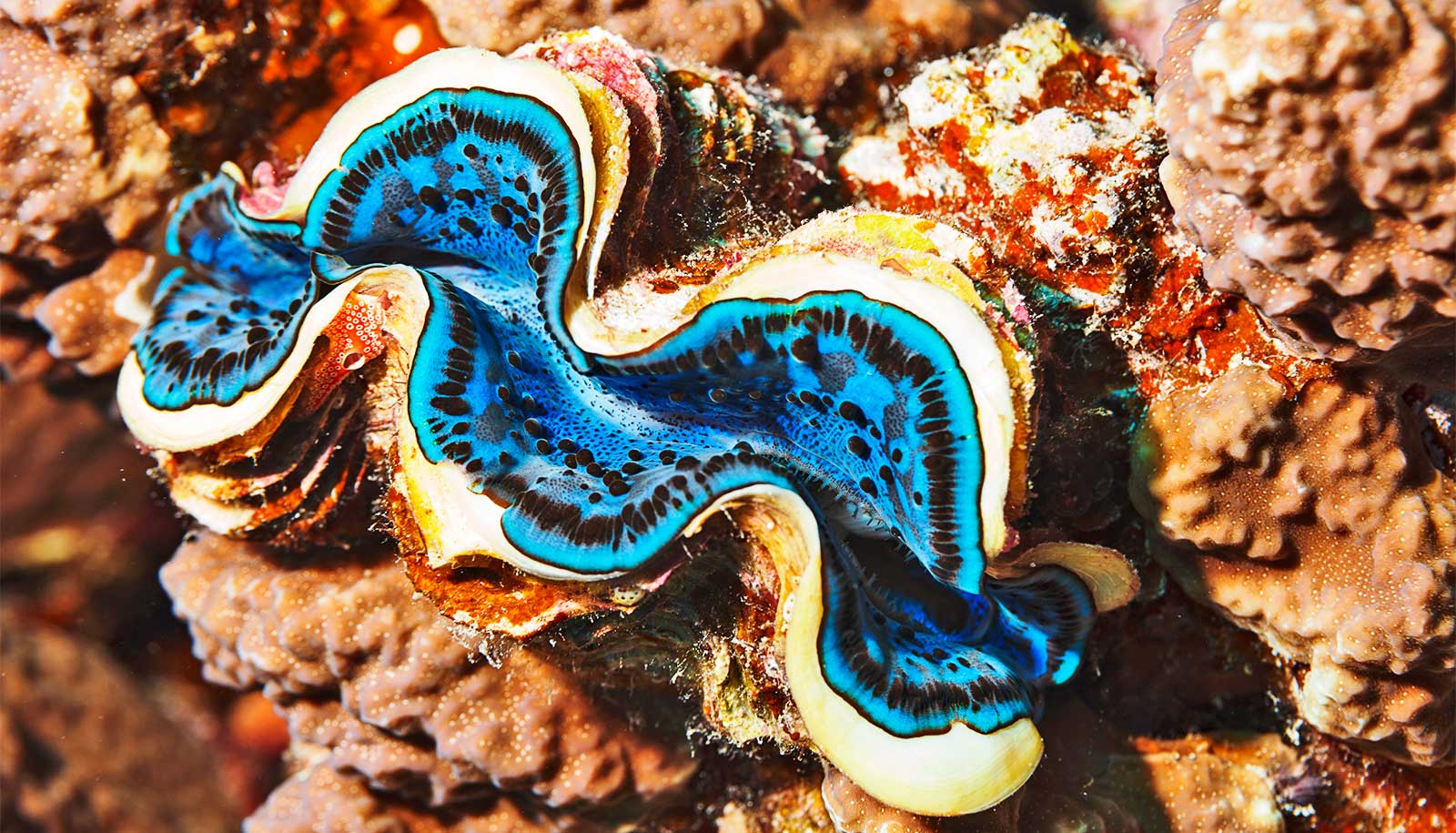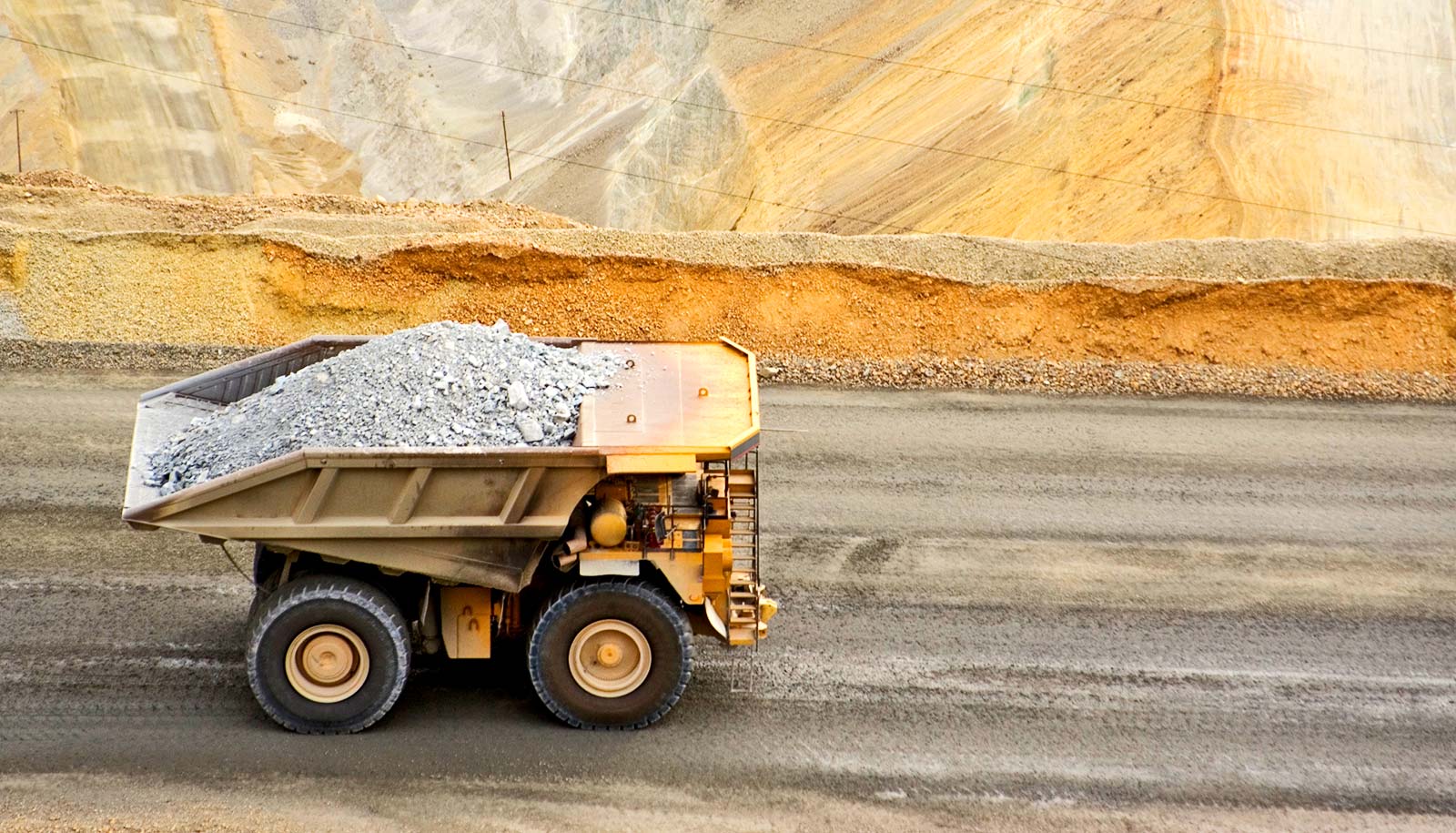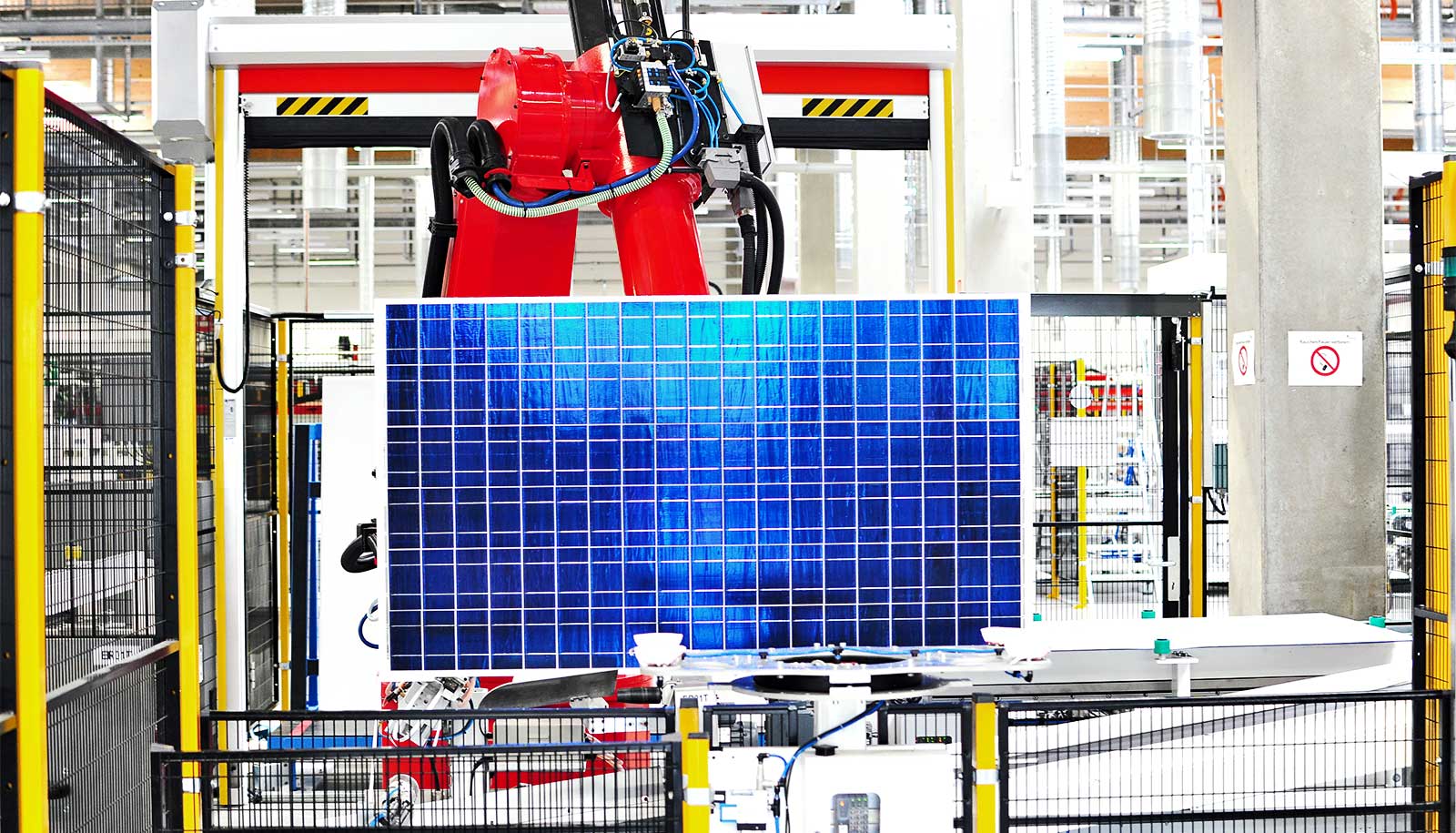Self-assembling compounds may make better catalysts for hydrogen fuel cells than platinum, according to new research.
Called cofacial cobalt porphyrins, these molecules—which are great at facilitating a chemical reaction that’s needed to produce power from hydrogen and oxygen—could be the next big advance in alternative energy.
“To bring down the price of hydrogen vehicles and make them a realistic option for more people, we need a catalyst that’s cheaper than platinum…”
The compounds assemble themselves in the lab from Lego-like chemical building blocks that are designed to fit together. It’s shake-and-bake technology: Scientists add the pieces to a flask, stir them together and add heat. Over time, the building blocks join together in the right places to form the final complexes.
The material is cheap and easy to produce in large quantities. This makes it an ideal candidate for replacing costly platinum catalysts used in hydrogen fuel cells today, says Timothy Cook, assistant professor of chemistry in the College of Arts and Sciences at the University at Buffalo, whose team designed the new self-assembled compounds.
The technology could enable automakers to slash the price of hydrogen cars, putting the eco-friendly vehicles within reach for more consumers. Low-cost fuel cells could also drive the development of other hydrogen-powered devices, such as backup generators. Hydrogen is considered a clean energy source because fuel cells emit only water as a byproduct.
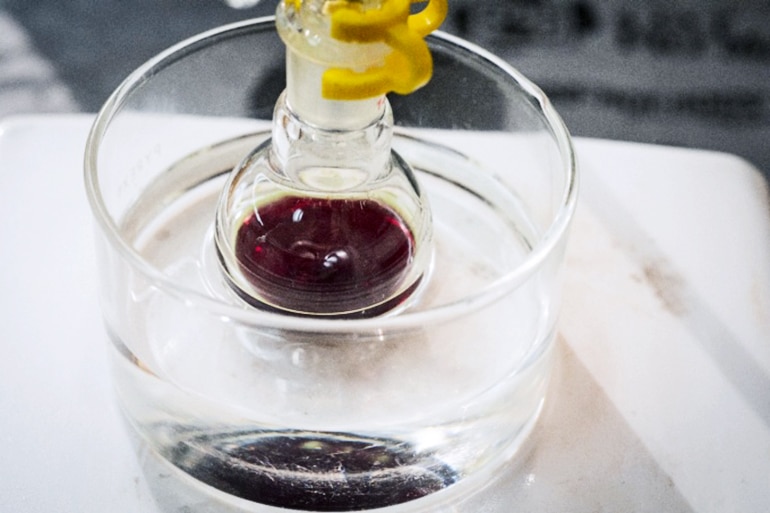
“To bring down the price of hydrogen vehicles and make them a realistic option for more people, we need a catalyst that’s cheaper than platinum,” Cook says. “The catalyst we made can be self-assembled in huge quantities. It has ruthenium and cobalt in it—much cheaper metals—and, yet, it works as well or better than a commercially available platinum catalyst that we tested alongside it.”
Cook’s lab specializes in molecular self-assembly, a powerful process for creating new materials.
“When I think about molecular self-assembly, I always think about Legos,” he says. “You have building blocks that are designed to fit together, like pieces of a puzzle. These building blocks are attracted to each other, and when you put them together and add energy, they come together on their own.
“Self-assembly is a great way to make a complex molecule,” Cook explains. “Usually, to synthesize a new material, you have to add pieces one by one, which takes time and money. Molecular self-assembly is faster—it’s a one-step process.”
Cofacial cobalt porphyrins consist of two flat molecules called cobalt porphyrins, which are stacked on top of each other like sandwich bread and linked by ruthenium “clips.”
Layer of precious metal could make fuel cells cheaper
To create the final compounds, Cook’s lab designed porphyrins and clips with chemical properties that ensured they would connect to each other at the right spots. The team then mixed a solution of the porphyrins with the clips and added heat. Within two days, the pieces had self-assembled to form the cofacial cobalt porphyrins.
Like the platinum catalyst they’re designed to replace, the cofacial cobalt porphyrins facilitate a chemical reaction in hydrogen fuel cells called oxygen reduction. This involves splitting an oxygen molecule into two separate oxygen atoms that can then bind with hydrogen to form water—an interaction that produces energy.
Scientists have long known that porphyrins are great at grabbing and splitting oxygen. In the human body, iron-based versions of these molecules are responsible for helping to convert the oxygen we breathe into water, releasing energy in the process.
But designing artificial porphyrin structures that act as catalysts has been difficult, Cook says. The process of creating these compounds is usually expensive, involving many steps and generating very little material at the end.
Self-assembly solves these problems. Cook’s team created 79 grams of cofacial cobalt porphyrins for every 100 grams of starter material—much better than the less than 1 percent yield that other labs have reported when synthesizing similar materials. In addition, his team was able to easily swap out and test ruthenium clips of different lengths to fine tune the compound’s electrochemical qualities with an eye toward designing an ideal catalyst.
0.01-nanometer squeeze improves platinum catalysts
“It is truly rewarding to work on the fundamental chemistry of this project, which could have a large impact on carbon-neutral energy conversion,” says first author Amanda N. Oldacre, a recent chemistry PhD graduate. “Using self-assembly techniques, we are able to make cheaper materials in 48 hours, without the difficult, time-consuming purification steps that other methods for synthesizing new compounds require.”
A study describing the new material appears in Chemistry: A European Journal.
Source: University at Buffalo
